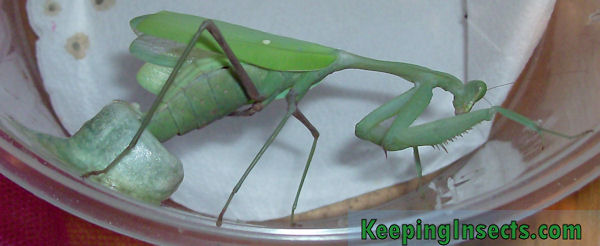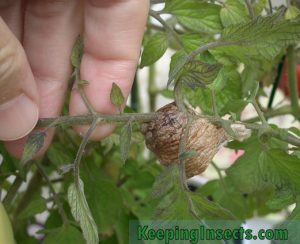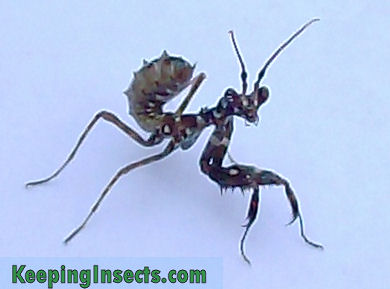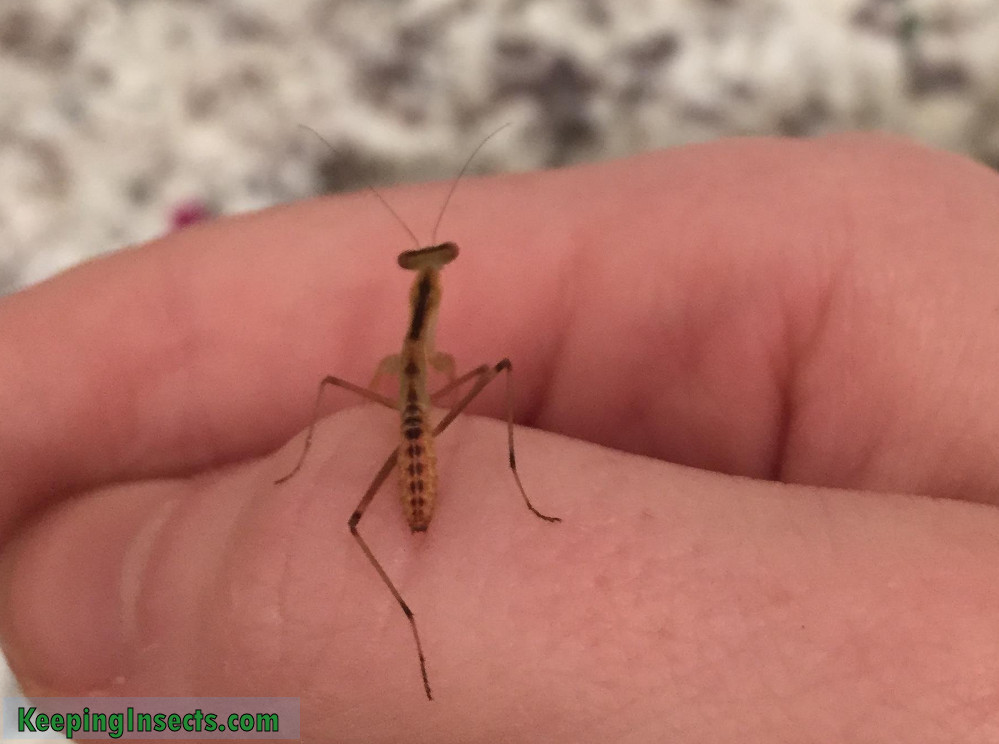How To Remove Praying Mantis Egg Sack
The eggs of a mantis are enclosed in a foamy pouch chosen an ootheca or egg sack. When the female person produces the ootheca it is soft, only very chop-chop information technology will dry to go business firm en tough. The ootheca protects the eggs until they hatch. Every species of mantis has a unlike color, size and shape of ootheca. Some take just a few eggs inside, other species can have hundreds of mantis eggs inside just one egg sack.
Most mantis species in temperate zones lay the ootheca in autumn, after which all adult mantises dice. The eggs inside the ootheca volition rest until spring, when the nymphs will hatch and abound up to repeat the cycle.

This female person Hierodula membranacea is making a ootheca.
Taking intendance of the ootheca

Chinese mantis egg sac
When the female produces an ootheca, y'all have to make sure not to disturb her. Around three – 5 days subsequently she has laid the ootheca, it has hardened enough to be removed from the enclosure of the female. It is recommended to remove information technology, because the nymphs need a unlike environment than the adult female. The female will besides consume the nymphs if she is housed with them.
Place the ootheca in a container that is more than 15 cm high and more than 8 cm wide to ensure there is enough space for the nymphs when they hatch. Of course extremely pocket-size species will do with less infinite, only more often than not these dimensions are suitable for all species. The container should take plenty of ventilation, either through a mesh or by punching holes in the plastic container.

A Gongylys gongylodes mantis ootheca against glass, making information technology possible to see the eggs.
Put the ootheca on the inside of the lid of the container. You take to place information technology in the same orientation every bit the female has placed it! Attach the ootheca with double sided tape. Be certain to cover all the tape, because any leftover record volition kill nymphs that try to walk on it. Y'all can also use a needle to attach the ootheca, just you tin just put the needle through a role of the ootheca that has no eggs in it. This is by and large the outer border of the ootheca.
Some species of mantis need a diapause, tropical species others do non. A diapause is a pause in development in winter, making information technology possible for the mantis to produce its eggs in autumn and have the nymphs hatch in spring. Depression temperature will abort the evolution of the ootheca. Higher temperatures will trigger the development. Species that have a diapause in nature, for example the European Mantis, need to get this pause in captivity too. Keep the ootheca libation, around 12 – 15 degrees Celcius, for at least 8 weeks. Afterward that you tin can keep the ootheca as described. Equally tropical mantis species don't experience seasons in nature, they don't demand a diapause.
For hatching the mantis eggs, you need to keep the humidity and temperature in the container on the appropriate level for your species of mantis. You can find this information in the Species department of this website. You can keep air humidity high by putting substrate on the bottom of the container. Good substrate is paper, cloth, white sand or very modest pebbles.
As soon as the nymphs hatch, you have to transfer them to a appropriate container in which you can raise them.
Raising the nymphs

A very young Pseudocreobotra wahlbergii nymph is black, but will molt into white.
The mantis nymphs are very modest so y'all should exist conscientious with them. They can go trapped on a bit of glue or resin residu or they can get caught in the fold of mesh. Brand sure the enclosure is safe for them. The prey yous will feed to these mantis nymphs should be the appropriate size. Most species will eat the small fruit flies Drosophila melanogaster.
Very immature nymphs are generally a bit less cannibalistic than the older nymphs. Yous can go along the young nymphs together in one large enclosure if you lot make sure at that place is plenty of hiding space and enough of food. When they get older you demand to place them in private containers to ensure maximal survival.
For more information most raising nymphs y'all should check out the individual page of the mantis species you are keeping. Every species needs a different air humidity and temperature to thrive.

Young African Mantis nymph, 3th instar
Read more!
Next page: Male or female mantis?
Previous page: Mating and breeding
Like pages about insects
Source: https://www.keepinginsects.com/praying-mantis/caring-for-mantis-eggs/

0 Response to "How To Remove Praying Mantis Egg Sack"
Post a Comment